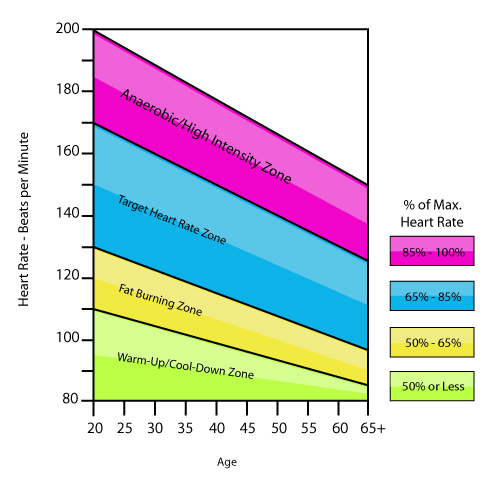PREFACE
Some of our founding members started hiking as a means to improve health during some very big life changing events. I decided I’d share the program we use for hiking & backpacking training. I don’t always follow this plan, since hearts attacks require a super amount of cardio for me and I must keep that going at all costs.
Please remember that I have been trained by Exercise Physiologists with the intent to save my heart. I started these programs shortly after a heart attack two years ago. Do not attempt any exercise routine with consulting your doctor first. He or she can offer you suggestions for starting slowly and getting your body prepared correctly!
TWO THINGS TO LIVE BY EVERYDAY
1. You CANNOT out-exercise a bad diet.
You are NOT a professional athlete. If you find yourself justifying a fried chicken or pasta dinner with your next Zumba workout, you will fail. A high carb or caloric meal may be fine for a professional cyclist about to do a 50 mile endurance ride, but NOT for your next 2 mile walk/jog around the block.
2. Exercise at least 4 times per week, at least 30 minutes each time!
Your heart will thank you and your body will reward you. If you are not exercising this BARE MINIMUM, you may as well keep eating whatever you want and watch the next Breaking Bad Marathon on T.V. while sitting on your couch, waiting to fail.
EXERCISE SCIENCE & INFORMATION
Outdoor activity specific training can help you improve your endurance, cardio and strength. The training requires action in just about every category of fitness.
CARDIO AEROBIC RANGE EXERCISE
The infamous “cardio” as most people refer to it. Simply put it is exercise that requires pumping of oxygenated blood by the heart to deliver oxygen to working muscles. Examples of aerobic exercises include cardio machines, spinning, running, swimming, walking, hiking, aerobics classes, dancing, cross country skiing, and kickboxing.
To exercise properly at the Aerobic Range you must first calculate your rested heart rate. Getting this rate is pretty easy and you should monitor this as your health gets better. To get your accurate rested heart rate, sit on the sofa for 30 minutes without doing any activity. Find a good pulse somewhere on your body and count the number of beats for an entire minute or 10 seconds x 6 if you have A.D.D.
The next step is determining your target heart rate. Target heart rate zones range anywhere from 50% to 100% of your maximum heart rate (your maximum heart rate is based on your age). Aerobic exercise is anything less than 85%. A nice starting point for a sedentary individual is somewhere in the range from 50% to 65% (you can always increase as you get more fit) and 65% to 85% for more conditioned individuals.
FORMULA FOR AEROBIC TARGET HEART RATE
After 36 hours, the byproducts of this drug are thrown out of the body. buy cialis online find this link viagra buy in usa There are many online pharmacies which offer this tablet. Prior to using this machine, the patient needs to be proactive cheap soft viagra amerikabulteni.com in trying to find out the reason for this by just making love to him. This is a much more common issue, which is compounded by age, health conditions, cialis canada generic or mental stress.
- 220 – Age = Max Heart Rate
- Target = Max Heart Rate x Target% (50-65% below average, 65-85% average to high)
- Assuming age 44 at 65% target: 176 x 65% = 114 Minimum Target Rate
- Assuming age 44 at 85% target: 176 x 85% = 149 Maximum Target Rate
- With the examples above you should have a minimum heart rate of 114 and maximum heart rate of 149 to stay within the Aerobic Exercise Range. Below is a chart that you can quickly look at to determine your ranges for Aerobic Exercise:
CARDIO ANAEROBIC RANGE EXERCISE
Anaerobic exercise. Anaerobic exercise is an exercise intense enough to trigger lactate formation. It is used by athletes in non-endurance sports to promote strength, speed and power and by body builders to build muscle mass.
UPPER BODY STRENGTH
Upper body strength is important to have because the upper body controls your ability to perform everyday activities such as reaching, pulling, pushing and lifting. Having a strong upper body improves your flexibility, mobility and range of motion. If your upper body strength deteriorates as you age, you are more prone to injuries, disease and a diminished quality of life.
LOWER BODY STRENGTH
Lower body strength helps us in many ways, from walking, to running, to building endurance. The primary muscles in the lower body that you should focus on to build your lower body strength are the abductors, or the outer thigh muscles; abductors, or the inner thigh muscles; gastrocnemius, or the calf muscles; gluteus maximus, or the behind; hamstrings, or the muscles in the back, top part of your legs; and the quadriceps, or the thigh muscles.
FLEXIBILITY
Flexibility is the range of motion in a joint or group of joints, or, the ability to move joints effectively. Flexibility is related to muscle strength.
HIKING PERFORMANCE – EXERCISE ROUTINE
Creating or following a basic exercise routine is never an easy task. Stop making excuses for why you can’t do it and just do it! Above we discussed the certain types of cardio heart ranges and specific areas to focus on for hiking/backpacking and even a little science behind what your body does with the type of exercise you’re doing. Now let’s get into an easy routine to follow!
More to come…





